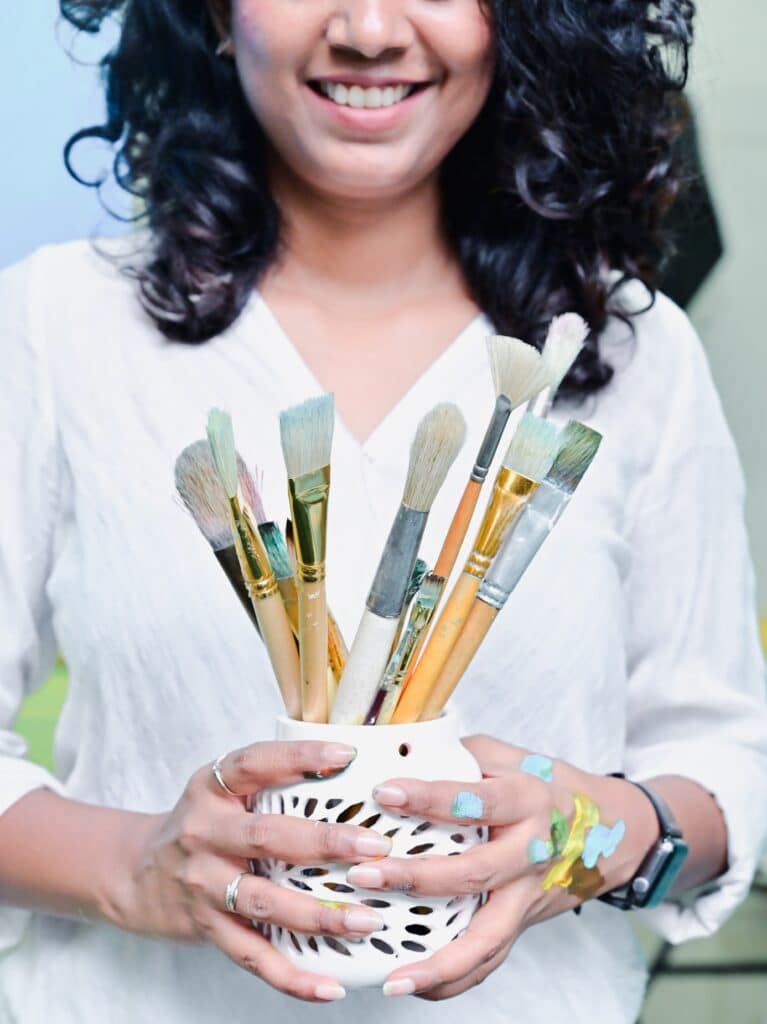When it comes to acrylic painting, selecting the right brushes can greatly impact your artistic process and the final outcome of your artwork.
The variety of brush shapes, sizes, and bristle materials available can be overwhelming, especially for beginners.
In this beginner’s guide, we will explore some of the best synthetic brushes for acrylic painting, considering their characteristics and recommended uses.
1. Flat Brushes
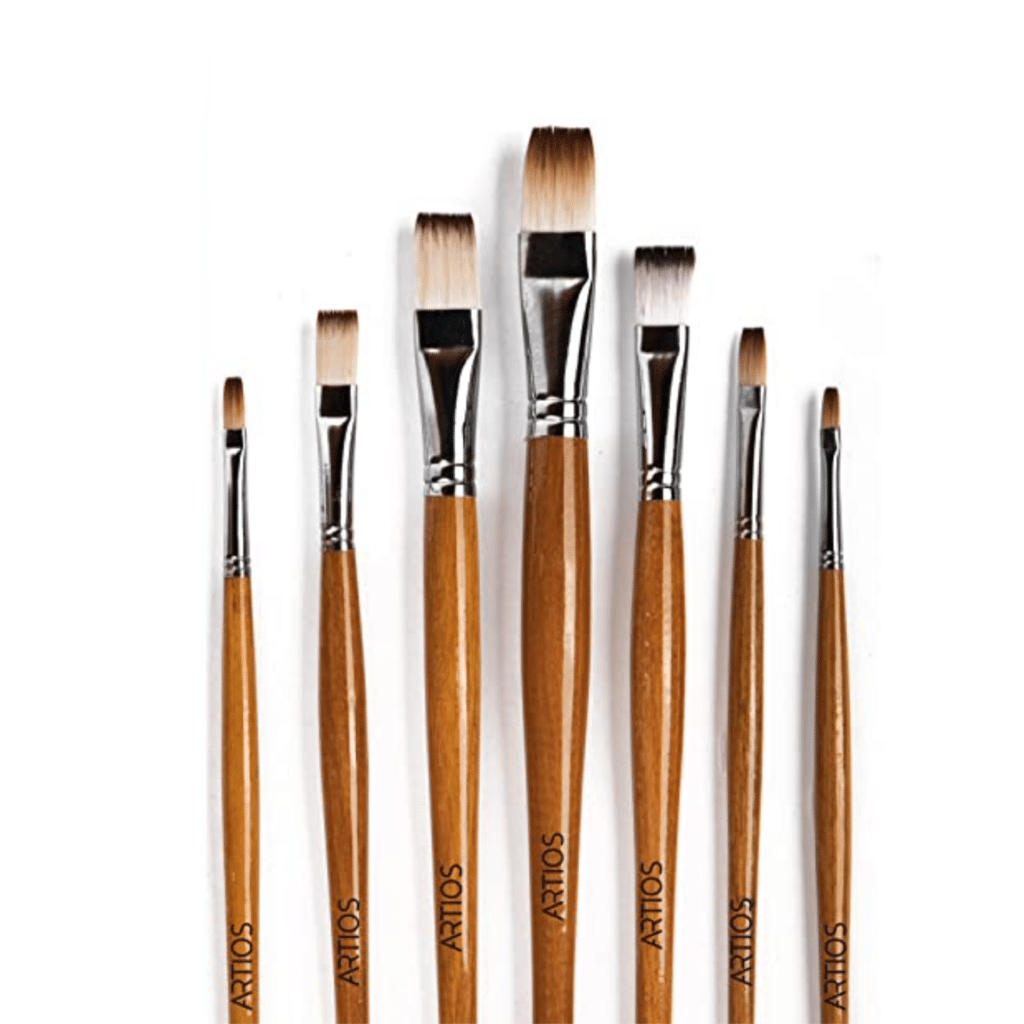
Flat brushes are a staple in any acrylic painter’s toolkit.
These brushes have a square or rectangular shape with bristles that are equally spread out, creating a flat, wide surface.
They are particularly useful for covering large areas, creating sharp edges, and making bold, straight strokes.
Flat brushes are ideal for applying base coats, blending colors, and achieving broad, bold strokes.
Opt for synthetic bristles as they are more durable and hold their shape well with acrylic paints.
Recommended Sizes: 1/2 inch, 1 inch, 2 inches
2. Round Brushes
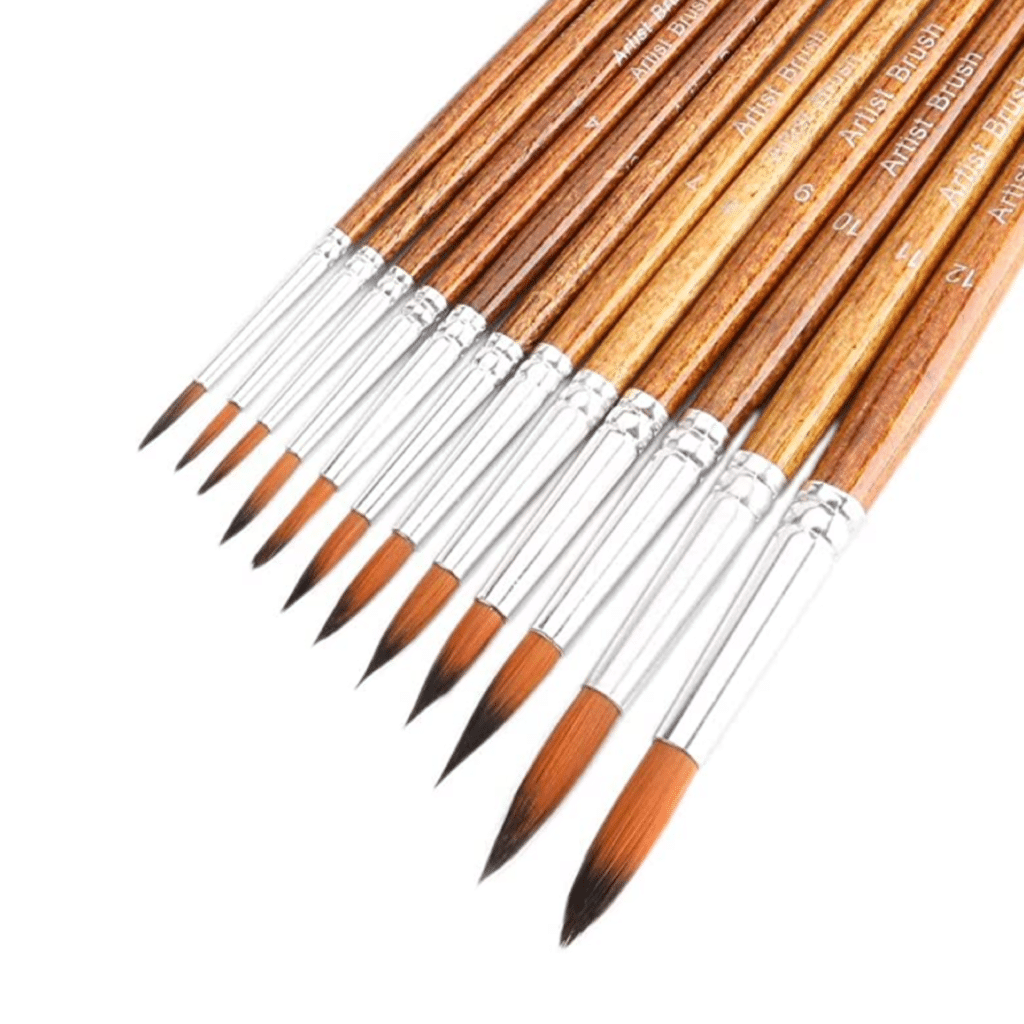
Round brushes feature a pointed tip and a round ferrule, which holds the bristles together.
They are versatile brushes that can be used for a variety of techniques, such as fine detailing, creating lines, and adding intricate patterns.
The pointed tip allows for precise strokes and controlled application of paint.
Round brushes are also ideal for blending and layering colors.
They come in a range of sizes, from very fine brushes for intricate work to larger ones for broader strokes.
Recommended Sizes: #2, #4, #6
3. Filbert Brushes

Filbert brushes have an oval-shaped, flat ferrule with rounded bristles, resembling a flattened round brush.
This unique shape allows artists to create both broad strokes and precise details.
Filbert brushes are ideal for blending colors, creating soft edges, and painting curved shapes like petals or leaves.
They offer more control than flat brushes, making them a great choice for beginners.
Recommended Sizes: #4, #6, #8
4. Fan Brushes
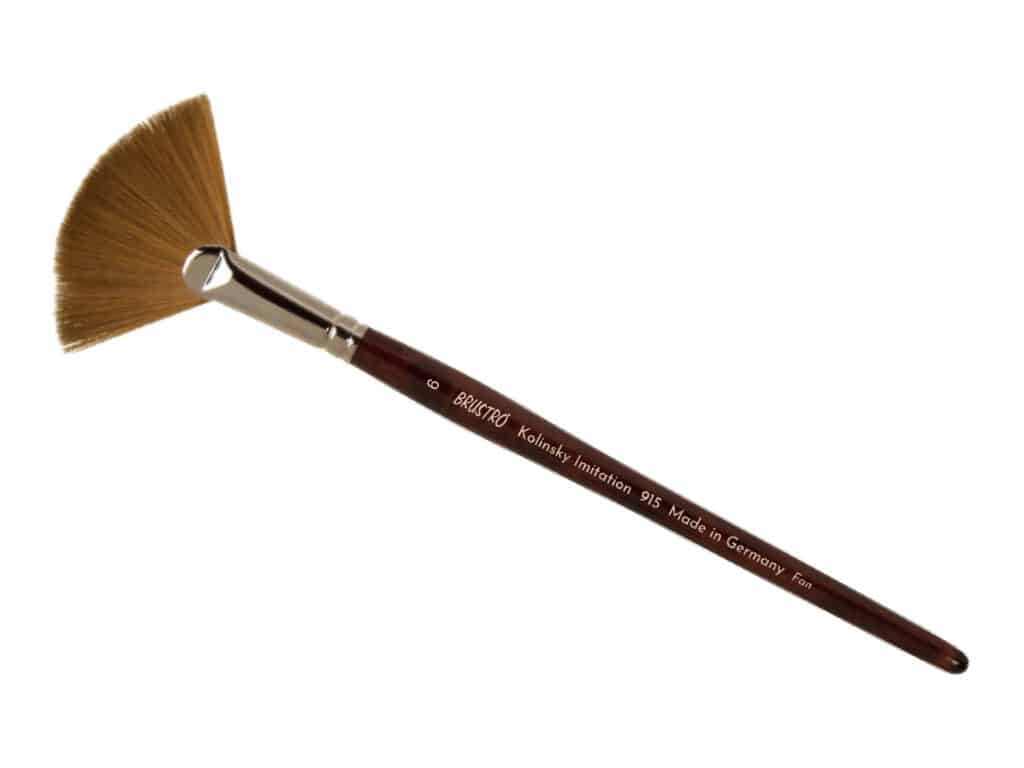
Fan brushes are recognizable by their thin, spread-out bristles arranged in the shape of a fan.
They are excellent for creating texture, such as foliage, grass, or hair strands.
Fan brushes are also useful for blending and softening edges. These brushes work well with acrylic paints, as they can easily manipulate the thick consistency of the medium.
They come in different sizes, allowing you to achieve different effects, from fine textures to broader strokes.
Recommended Sizes: #2, #4, #6
5. Detail Brushes

Detail brushes, also known as liner brushes or script brushes, have long, thin bristles that come to a fine point.
They have very fine, pointed tips, making them perfect for intricate work and small-scale details.
These brushes are perfect for adding intricate details, fine lines, and small accents to your acrylic paintings.
They are indispensable when working on portraits, still life, or any subject that requires precision. Synthetic bristles are preferred for detail brushes, as they maintain their shape and offer better control.
Recommended Sizes: 0, 00, 000
6. Angular Brushes
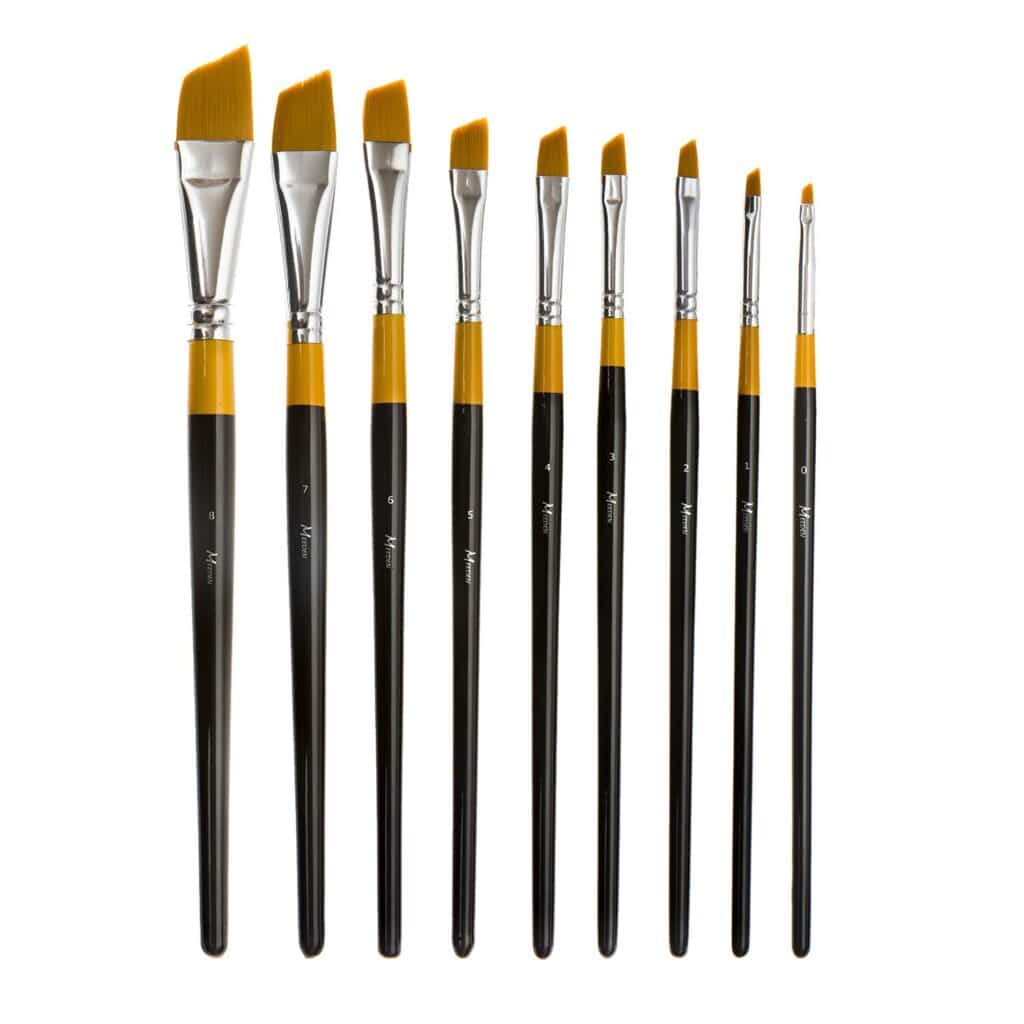
Angular brushes have bristles cut at an angle, creating a slanted edge.
These brushes are versatile and can be used for a variety of techniques, including painting sharp edges, precise lines, and controlled strokes.
They are particularly useful for painting angular shapes, such as buildings or geometric designs.
Recommended Sizes: 1/4 inch, 3/8 inch, 1/2 inch
7. Mop Brushes
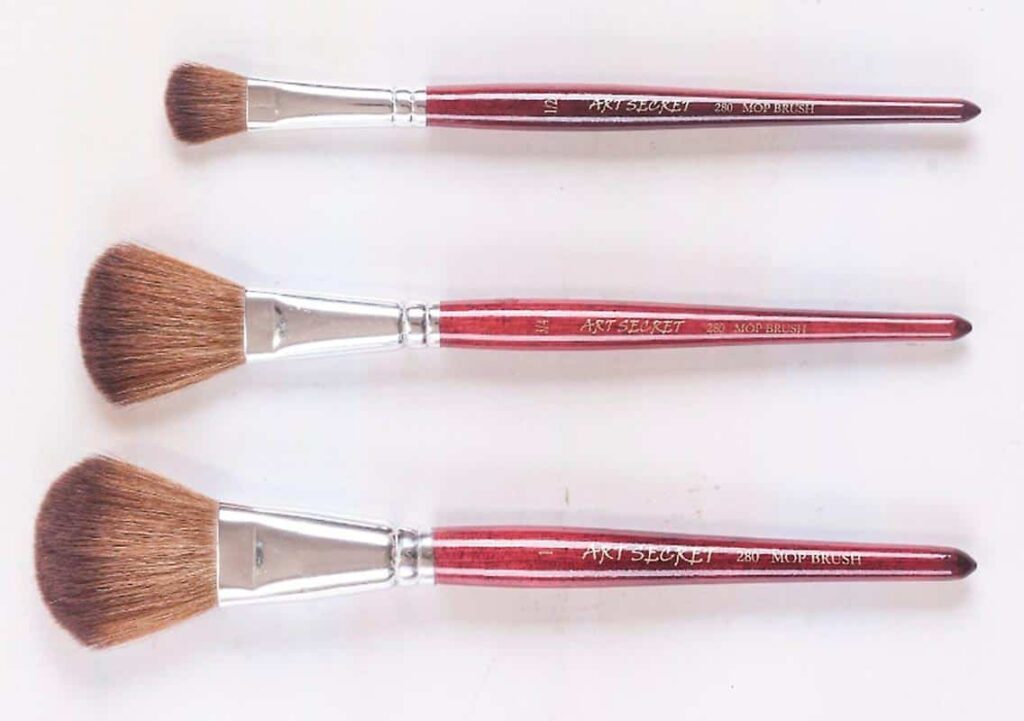
Mop brushes have soft, full bristles that are usually round or oval in shape.
These brushes hold a lot of paint and are great for creating smooth, blended effects, such as washes, backgrounds, or adding a soft touch to your paintings.
Mop brushes can also be used for dry brushing techniques to create subtle textures.
Recommended Sizes: 1/2 inch, 3/4 inch, 1 inch
8. Stencil Brushes

Stencil brushes have short, stiff bristles and a flat, rounded shape.
They are specifically designed for working with stencils, allowing you to apply paint precisely without smudging or bleeding.
Stencil brushes are ideal for adding intricate patterns, textures, or lettering to your acrylic paintings.
Recommended Sizes: #4, #6, #8
Get my exact supply list for acrylic paintings, with helpful color mixing tips that you can start implementing right away!
9. Specialty Brushes
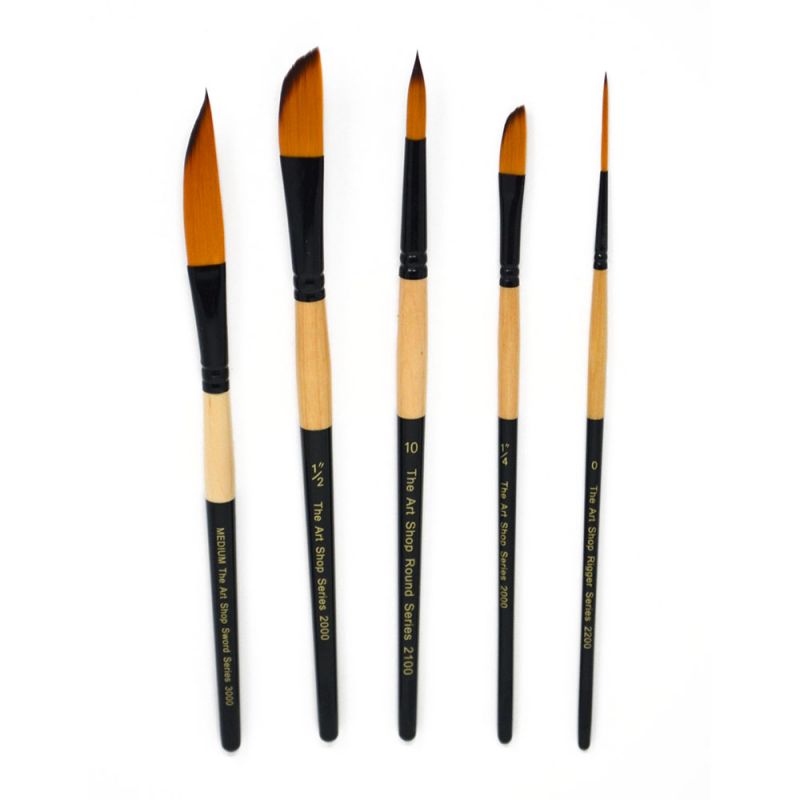
In addition to the essential brushes mentioned above, there are various specialty brushes available that cater to specific techniques or effects.
Some examples include
- fan filbert brushes (a combination of fan and filbert shapes)
- dagger brushes (long, tapered bristles)
- rigger brushes (extra-long, thin bristles for creating fine lines and details).
These brushes can add unique textures and visual interest to your paintings, but they are not necessarily essential for beginners.
How to select your best brush?
When selecting brushes, consider the size, stiffness, and quality of the bristles.
Brush sizes are often indicated by numbers, with smaller numbers representing smaller brushes. It’s a good idea to have a range of brush sizes to accommodate different painting techniques and effects.
Read the article below to gain better understanding!
Brush care & maintenance
Proper care and maintenance of your brushes are crucial to ensure their longevity and optimal performance.
After each painting session, clean your brushes thoroughly with mild soap or brush cleaner, depending on the type of paint used.
Avoid leaving brushes standing in water or solvents, as it can damage the bristles.
Store your brushes upright or horizontally to maintain their shape.
Regularly reshape the bristles by gently rinsing them with lukewarm water and reshaping them with your fingers.
With proper care, your brushes will last longer and continue to deliver great results.
Pin the below image in your Pinterest board for future reference.
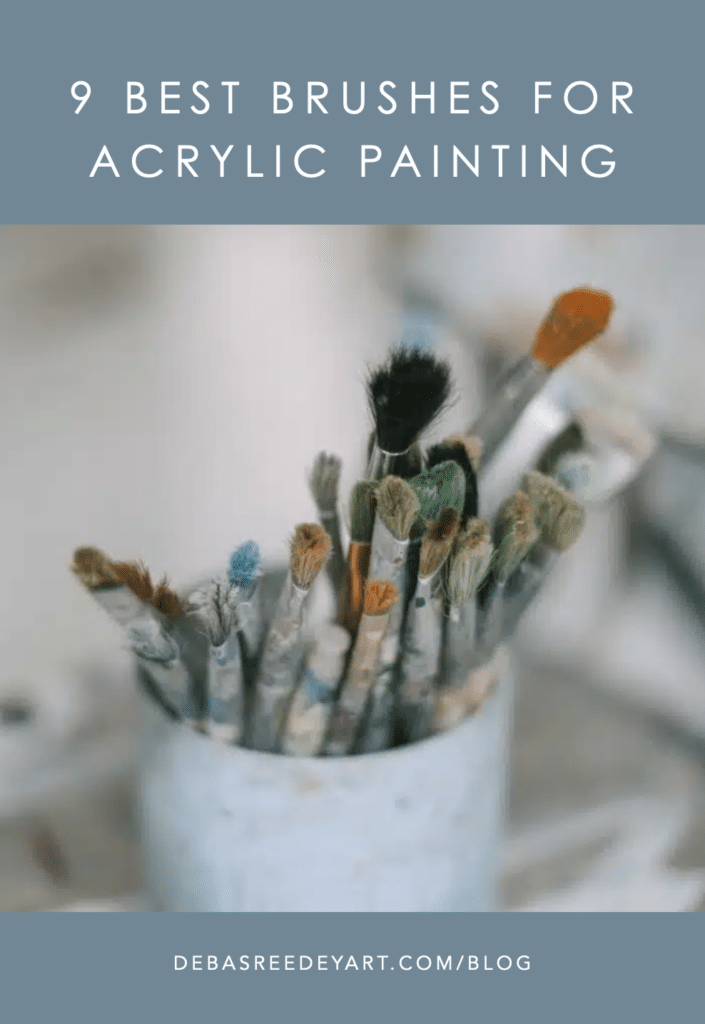
By understanding the different types of brushes available and their specific uses, beginners can make informed choices when selecting brushes for acrylic painting.
Each brush mentioned in this guide serves a unique purpose and can contribute to the overall quality of your artwork.
Remember, it’s not just about the brand or cost of the brushes, but also about finding the right size, shape, and bristle type that suits your painting style and preferences.
- Which brush type are you most excited to try?
- Are there any specific techniques or effects you are looking forward to exploring with your new brushes?
Share your thoughts and experiences in the comments below. We can’t wait to see the incredible artworks you create with your chosen brushes!
Happy painting!






